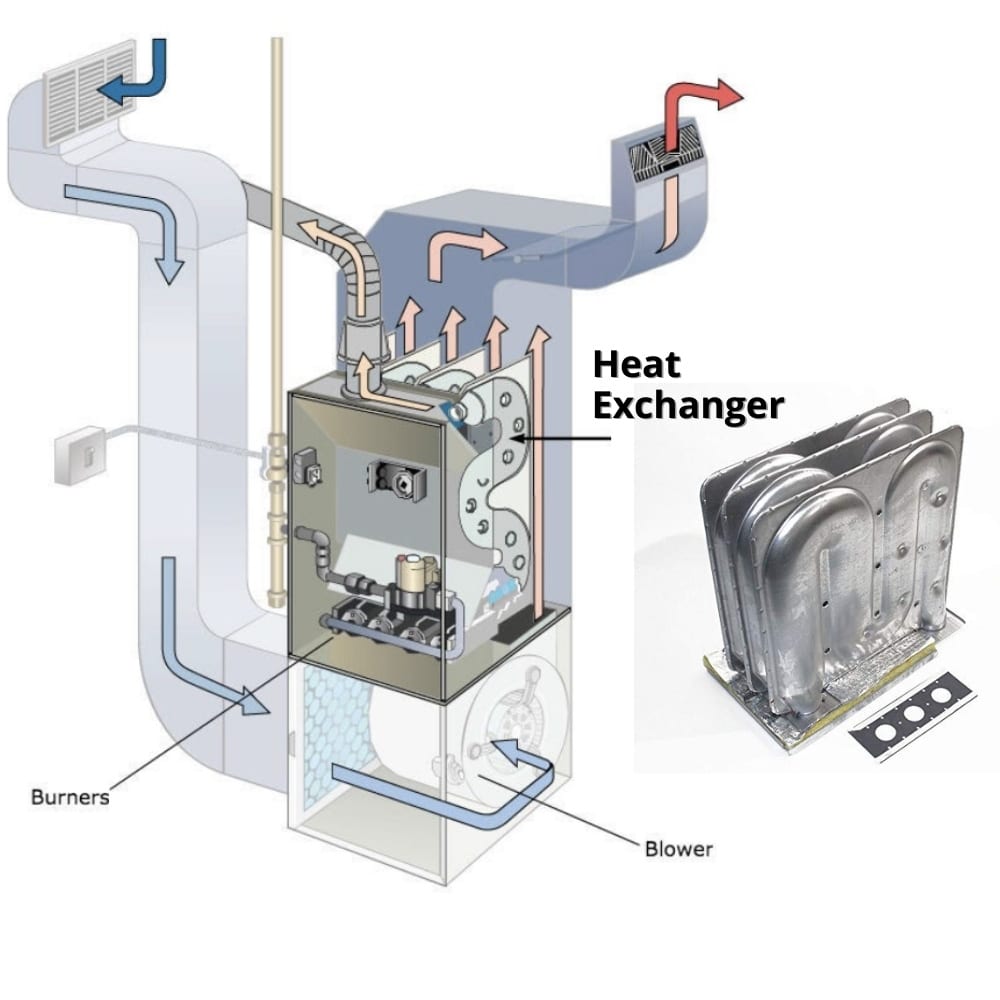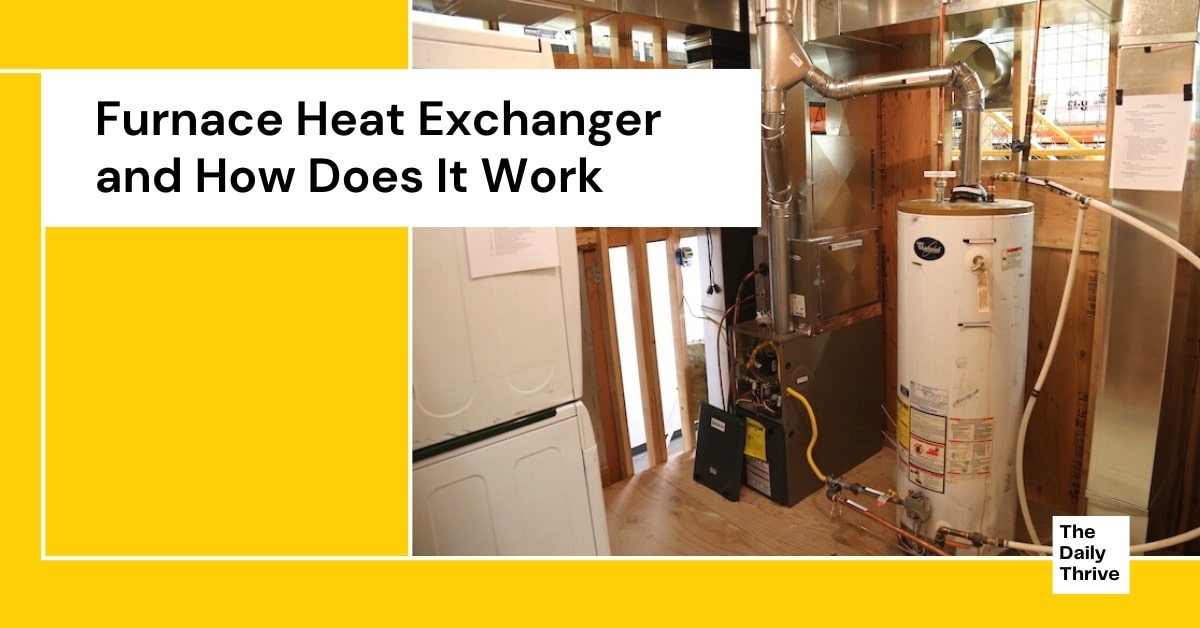Every furnace has a heat exchanger, as it is an essential part of the heating process. It is the part that is responsible for keeping your breathing air and the combustion process separate. Here’s a look at what you need to know about furnace heat exchanger.
What Does The Heat Exchanger Do?
Ever notice how your car seems to run better right after an oil change, especially if you wash and wax it? Well, it’s the same for your furnace. Don’t laugh, I’m serious!
The main component of heating units, both forced air and hot water, is the heat exchanger. This component takes the heat produced by burning fuel and transfers it to the water or air for distribution throughout the house. In a hot water system, this component is usually concealed from view, and in a forced-air unit, only 10 to 25% (sometimes it’s completely hidden) of this component is typically visible without disassembly.
Cut-away view of a modern gas furnace (configuration will vary between models):

- Solid-state furnace control (Fan assembly visible at lower rear)
- Draft inducer (fan-forced exhaust)
- Igniter and flame sensor
- Gas valve and manifold
- Gas burners
- Heat exchanger(s)
- Air filters
What Can Go Wrong With A Furnace Heat Exchanger?
What usually makes heat exchangers inoperative is developing a hole or a crack that allows the hot water to escape, or exhaust from the combustion fuel to escape into the interior air of the home.
Constant heating and cooling from years of use will eventually cause a heat exchanger to crack, however some last longer than others. Under ideal conditions, many survive well beyond their predicted life spans.
A cracked heat exchanger poses a potentially dangerous risk to your home and your family. Harmful carbon monoxide gases from the combustion process will mix with the air you breathe.
The furnace heat exchanger’s role is crucial to your family’s safety and well-being. When that heat exchanger is cracked, it cannot keep all of those harmful chemicals out of the air that passes into your home.
Why Do Heat Exchanger Fail?
There are many reasons why a heat exchanger might fail. Simple aging can cause the exchanger to deteriorate, weaken, and crack. Additionally, poor HVAC maintenance will make the furnace heat exchanger leaking water, which can cause cracks.
When the furnace has to work harder to produce heat, as it does with a clogged air filter, it can stress the heat exchanger and cause damage. Similarly, if your furnace is too small for your home, the stress on the unit when it tries to maintain your home’s temperature can also cause the heat exchanger to crack.
Another reason for furnace heat exchanger failure is a dirty and clogged air filter.
How To Avoid Premature Failure?
With proper maintenance and service, the furnace heat exchanger can last long for a while. Scheduling annual maintenance will prevent problems that are known to lead to heat exchanger cracks.
The common cause that results in a heat exchanger being cracked is reduced airflow due to dirty furnace filters. So, the filters need to be kept clean of dirt, dust, and other debris.
Dirty air filters and fan blades, dirty ductwork, and obstructed air vents can all contribute to wear on fan motors, reduced efficiency, and even premature failure of heat exchangers. Fuel-fired forced-air furnaces are prone to overheating due to obstructions to airflow.
Modern furnaces are designed to shut down if temperatures become dangerously high. However, moderately elevated internal temperatures caused by dirt, dust, and debris may not be high enough to switch off a furnace, while remaining high enough to cause metal fatigue over extended periods of time.
It seems regular cleaning and maintenance play a factor in life expectancy, as does the environment surrounding the unit. Damp environments tend to assist the build-up of rust on the heat exchanger, shortening its life, while dry, clean environments tend to increase the life span of most furnaces.
What to Do if Your Furnace Heat Exchanger Isn’t Working?
You might think that you don’t need to worry about a cracked heat exchanger because your furnace seems to be running fine even with the damage. While it’s true that your furnace can continue to run and produce heat with a crack in the heat exchanger, it still needs to be repaired right away.
Your HVAC repair technician will need to address a cracked heat exchanger. In some instances, the crack may be able to be patched, but in most cases, the resulting structural weakness means that you’ll need to have the exchanger replaced entirely. Often this kind of furnace heat exchanger repair is too expensive compared to replacing the whole furnace system.






